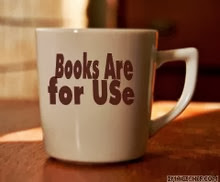This is a running post: Updated Oct 26 2006
Open Univeristy librarian knocks up custom social web search engine: Social networking receives specialist search engine from academic expert,
By Tracey Caldwell 13 Oct 2006:
An experimental search engine is allowing users to search the del.icio.us social bookmarking service, using any del.icio.us links page, or the domains those bookmarks come from, to limit a search.
Information professionals are also contributing towards building a social infostructure - Doing community wise thinking and making us think is their primary moto. Keep up the good work. Good breeds Good.
And, among many that I frequently cross is Nancy White, whom I would list among the pioneers. See her most recent work on "Blogs and Community - Some thinking out loud:"
Part 1; Part 2; Part 3; Part 4; and Part 5 (the last part)
So we have identified three forms of blog based community, the single blog centric, topic centric and community centric. Now lets look at the implications for those thinking about designing and nurturing blog based communities. Can they help us strategically? (This assumes we believe we can "build" or "nuture" communities either from a top down or bottom up approach. I'll let you wrestle with the "if" part of that assumption and save it for later.)
I admire Nancy and a comment on her blog simply tells a long story in short:
Your 5 posts on the different blog communities are terrific. Thanks for thinking this through and sharing. I hope to be a lead staff soon for establishing a community of practice for youth worker practitioners and their respective non profit organizations (and some teachers) who are working with youth poverty and homelessness issues. Blogs will be one part of the effort to improves worker and organizational capacity in our Region, so your work is spot on for me. Continue reading Brent MacKinnon
To find something so similar is what is called as serendipity. The following is just wearing the same hat*, I think:
"Social bookmarking, or using tags to organize web pages into a publicly viewable archive online, is becoming increasingly common among nonprofit organizations and supporting technologists. Social bookmarking tools are preferable to browser bookmarks or favorites in a number of ways, including accessibility from any computer, superior detail in archiving and retrieval and the ability to share our bookmarks as a whole or by tag with other people.
Most of the time it seems to me that the conversation about social bookmarking starts with del.icio.us - probably the most popular social bookmarking tool online. There are many more options available, however, and I thought it would be useful to provide some brief explanation of a few alternatives and some things to consider in making your selection...."
Four Social Bookmarking Services Compared are:
del.icio.us;
Ma.gnolia.com;
Furl.net; and
markaboo.com
See also:
Previous posts at my blogs:
*quote from the site: Never Again International uses a wide variety of social web tools to bring together young people resisting violence around the world.




